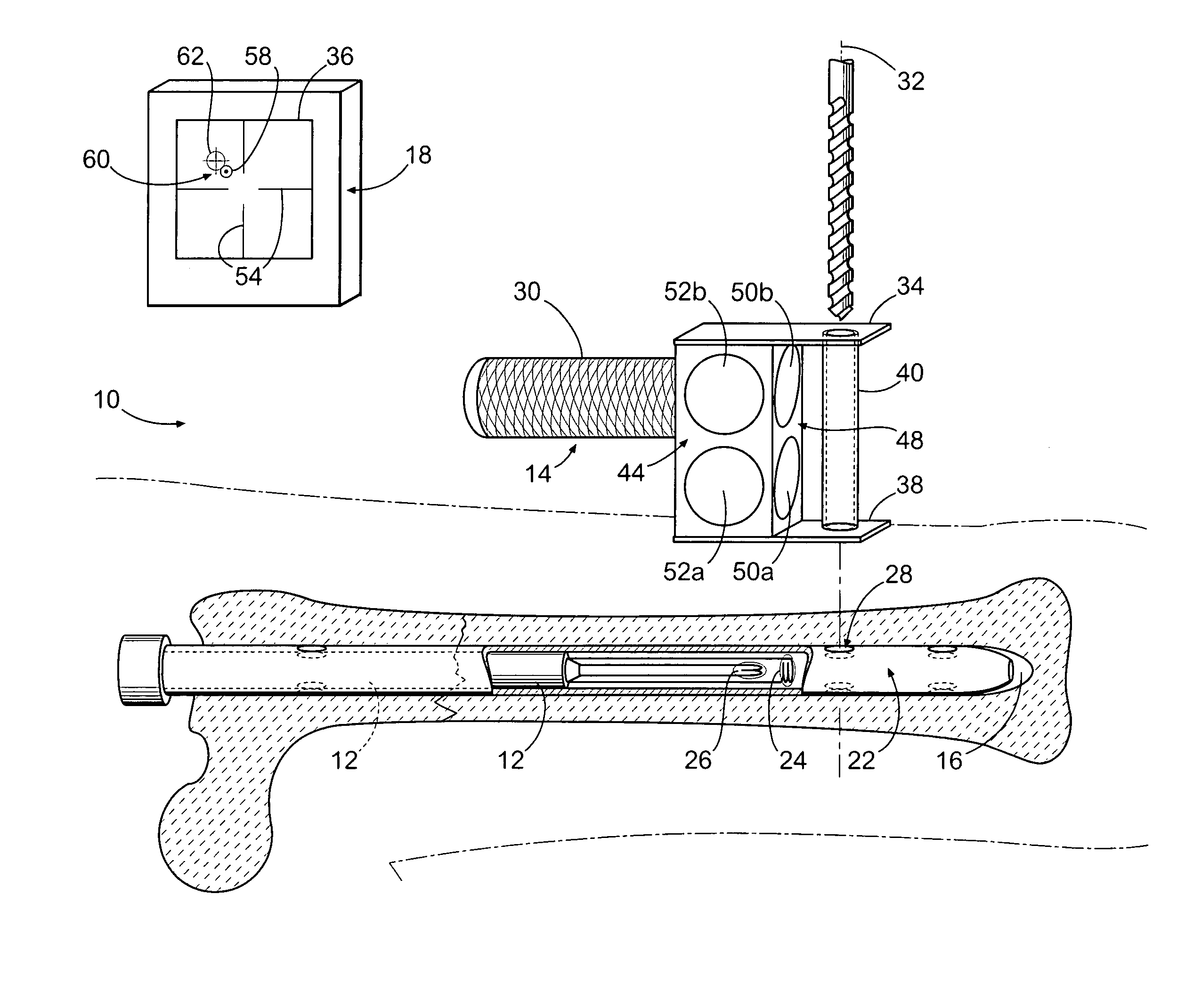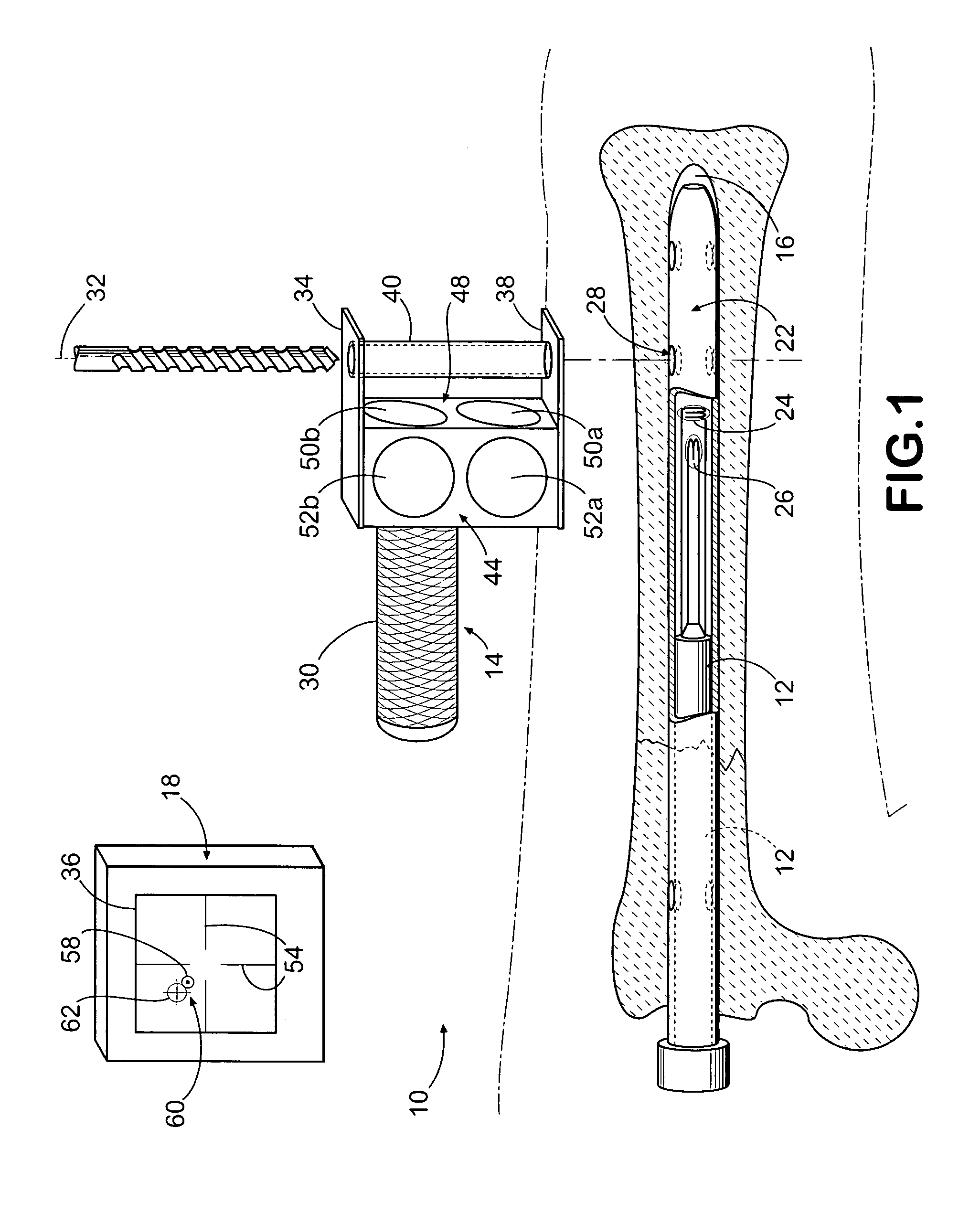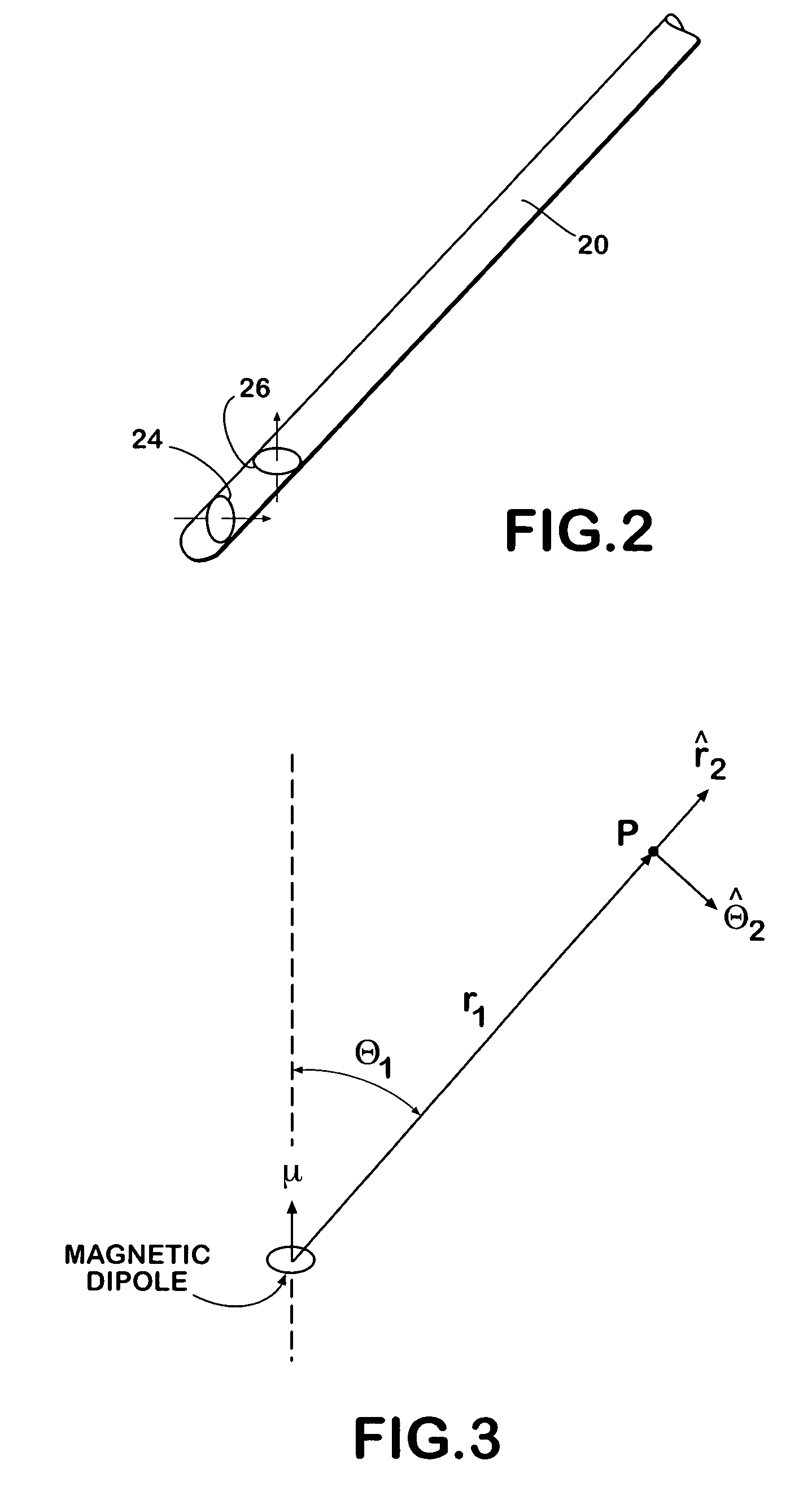Method and apparatus for distal targeting of locking screws in intramedullary nails
a locking screw and intramedullary nail technology, applied in the field of system for aligning locking screws with openings in intramedullary nails, can solve the problems of inability to consistently identify the position and angular orientation of the drill bit, long-term consequences of x-ray accumulation, and difficulty in achieving the effect of reducing the number of screws in the drill bit passing through the transverse hole, reducing the number of screws in the drill bit, and simplifying the formation of the integral uni
- Summary
- Abstract
- Description
- Claims
- Application Information
AI Technical Summary
Benefits of technology
Problems solved by technology
Method used
Image
Examples
Embodiment Construction
[0029]A system 10 for determining the target point of a drill within a drill bushing is shown in FIG. 1. System 10 is comprised of a probe 12, a handheld guide 14, and a computer 18. As shown in more detail in FIG. 2, probe 12 is comprised of an elongated member 20 to which two drive coils 24, 26 are mounted in orthogonal relationship to one another. The elongated member is typically constructed of main conduit and an integral unit enclosed within a sheath of plastic material with dimensions so that the probe may be inserted in interior passageway 16 of an intramedullary nail 22. Such nails are well-known in the orthopedic field for securing broken bone fragments to one another. The two drive coils may be magnetic dipoles formed by wrapping an electrical conductor around a ferrite core. Preferably, the dipoles are formed by wrapping 201 turns of 44 AWG copper wire around a 1 mm ferrite rod. The drive coils may be fixedly supported within probe 12 or they may be encapsulated within a...
PUM
 Login to View More
Login to View More Abstract
Description
Claims
Application Information
 Login to View More
Login to View More - R&D
- Intellectual Property
- Life Sciences
- Materials
- Tech Scout
- Unparalleled Data Quality
- Higher Quality Content
- 60% Fewer Hallucinations
Browse by: Latest US Patents, China's latest patents, Technical Efficacy Thesaurus, Application Domain, Technology Topic, Popular Technical Reports.
© 2025 PatSnap. All rights reserved.Legal|Privacy policy|Modern Slavery Act Transparency Statement|Sitemap|About US| Contact US: help@patsnap.com



